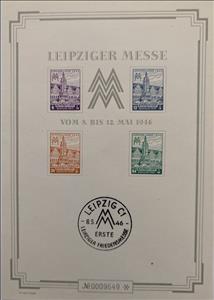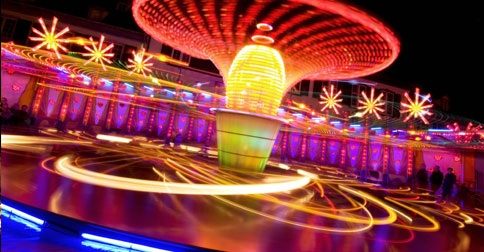Souvenir Sheet: Leipzig Market, Old Town Hall (Germany, Soviet Occupation of West Saxony 1946)
Leipzig Market, Old Town Hall (Germany, Soviet Occupation of West Saxony 1946)
08 May (Germany, Soviet Occupation of West Saxony ) within release West Saxony : Leipzig Fair 1946 goes into circulation Souvenir Sheet Leipzig Market, Old Town Hall face value 126+124 German reichspfennig
| Souvenir Sheet Leipzig Market, Old Town Hall in catalogues | |
|---|---|
| Michel: | Mi: DD BL5SX |
Souvenir Sheet is square format.
Numbered sheet according to Michel there were 1140 in circulationAlso in the issue West Saxony : Leipzig Fair 1946:
- Stamp - Leipzig Market, Old Town Hall face value 6+14;
- Souvenir Sheet - Leipzig Market, Old Town Hall face value 126+124;
Souvenir Sheet Leipzig Market, Old Town Hall it reflects the thematic directions:
Architecture (Latin architectura, from the Greek ἀρχιτέκτων arkhitekton "architect", from ἀρχι- "chief" and τέκτων "builder") is both the process and the product of planning, designing, and constructing buildings and other physical structures. Architectural works, in the material form of buildings, are often perceived as cultural symbols and as works of art. Historical civilizations are often identified with their surviving architectural achievements.
A building or edifice is a structure with a roof and walls standing more or less permanently in one place, such as a house or factory. Buildings come in a variety of sizes, shapes and functions, and have been adapted throughout history for a wide number of factors, from building materials available, to weather conditions, to land prices, ground conditions, specific uses and aesthetic reasons. Buildings serve several needs of society – primarily as shelter from weather, security, living space, privacy, to store belongings, and to comfortably live and work. A building as a shelter represents a physical division of the human habitat (a place of comfort and safety) and the outside (a place that at times may be harsh and harmful).
The City Halls are part of a market complex designed by John Carrick in 1882, but the grand hall itself was designed by George Murray and opened in 1841. It was the first hall suitable for large gatherings and concerts to be built in the City and played host to the likes of Benjamin Disraeli, Charles Dickens, Hungarian patriot Lajos Kossuth and William Ewart Gladstone. From its early days it hosted a wide variety of popular and classical concerts including those by touring groups such as Louis-Antoine Jullien's celebrated London-based orchestra and Charles Halle's orchestra from Manchester. Glasgow's first regular orchestral subscription concert series, played by an orchestra managed by the Glasgow Choral Union, was given in the grand hall from 1874 until the opening of the much larger St Andrew's Hall in 1877. Arthur Sullivan was its conductor for two seasons from 1875 to 1877. The Old Fruitmarket directly adjoins the grand hall and was a functioning market until the 1970s after which it was in occasional use for jazz and folk music events. The adjoining buildings were home to bustling produce markets such as the fresh fruit and flower market and the cheese market.
A fair (archaic: faire or fayre) is a gathering of people for a variety of entertainment or commercial activities. Fairs are typically temporary with scheduled times lasting from an afternoon to several weeks. Fairs showcase a wide range of goods, products, and services, and often include competitions, exhibitions, and educational activities. Fairs can be thematic, focusing on specific industries or interests.




